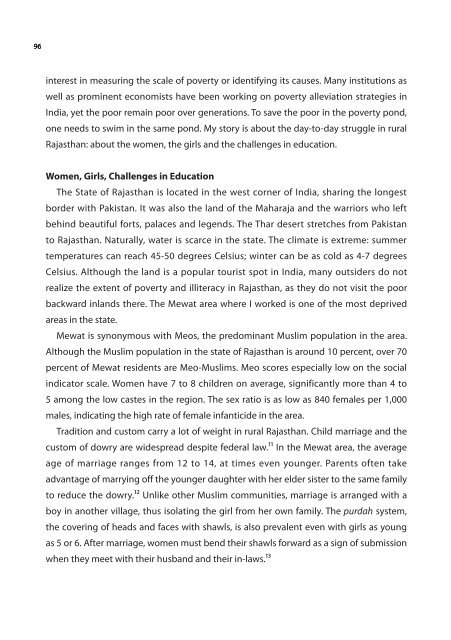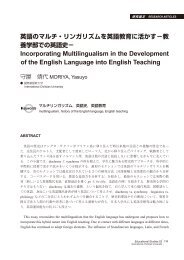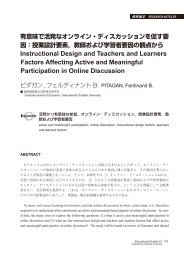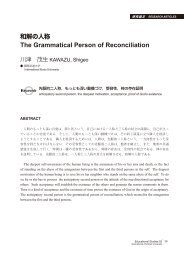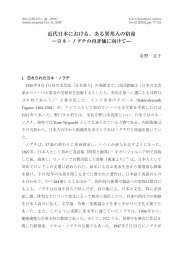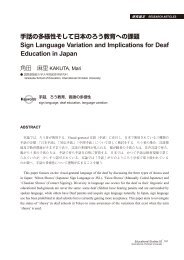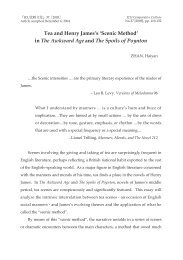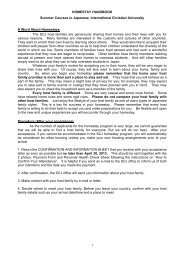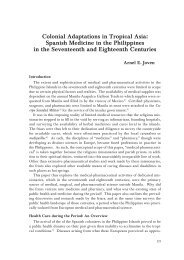Untitled - subsite - å½éåºç£æ大å¦
Untitled - subsite - å½éåºç£æ大å¦
Untitled - subsite - å½éåºç£æ大å¦
You also want an ePaper? Increase the reach of your titles
YUMPU automatically turns print PDFs into web optimized ePapers that Google loves.
96<br />
interest in measuring the scale of poverty or identifying its causes. Many institutions as<br />
well as prominent economists have been working on poverty alleviation strategies in<br />
India, yet the poor remain poor over generations. To save the poor in the poverty pond,<br />
one needs to swim in the same pond. My story is about the day-to-day struggle in rural<br />
Rajasthan: about the women, the girls and the challenges in education.<br />
Women, Girls, Challenges in Education<br />
The State of Rajasthan is located in the west corner of India, sharing the longest<br />
border with Pakistan. It was also the land of the Maharaja and the warriors who left<br />
behind beautiful forts, palaces and legends. The Thar desert stretches from Pakistan<br />
to Rajasthan. Naturally, water is scarce in the state. The climate is extreme: summer<br />
temperatures can reach 45-50 degrees Celsius; winter can be as cold as 4-7 degrees<br />
Celsius. Although the land is a popular tourist spot in India, many outsiders do not<br />
realize the extent of poverty and illiteracy in Rajasthan, as they do not visit the poor<br />
backward inlands there. The Mewat area where I worked is one of the most deprived<br />
areas in the state.<br />
Mewat is synonymous with Meos, the predominant Muslim population in the area.<br />
Although the Muslim population in the state of Rajasthan is around 10 percent, over 70<br />
percent of Mewat residents are Meo-Muslims. Meo scores especially low on the social<br />
indicator scale. Women have 7 to 8 children on average, significantly more than 4 to<br />
5 among the low castes in the region. The sex ratio is as low as 840 females per 1,000<br />
males, indicating the high rate of female infanticide in the area.<br />
Tradition and custom carry a lot of weight in rural Rajasthan. Child marriage and the<br />
custom of dowry are widespread despite federal law.¹¹ In the Mewat area, the average<br />
age of marriage ranges from 12 to 14, at times even younger. Parents often take<br />
advantage of marrying off the younger daughter with her elder sister to the same family<br />
to reduce the dowry.¹² Unlike other Muslim communities, marriage is arranged with a<br />
boy in another village, thus isolating the girl from her own family. The purdah system,<br />
the covering of heads and faces with shawls, is also prevalent even with girls as young<br />
as 5 or 6. After marriage, women must bend their shawls forward as a sign of submission<br />
when they meet with their husband and their in-laws.¹³


